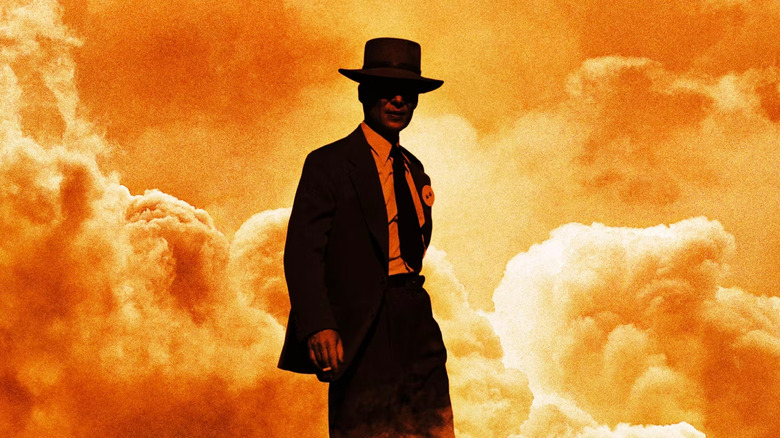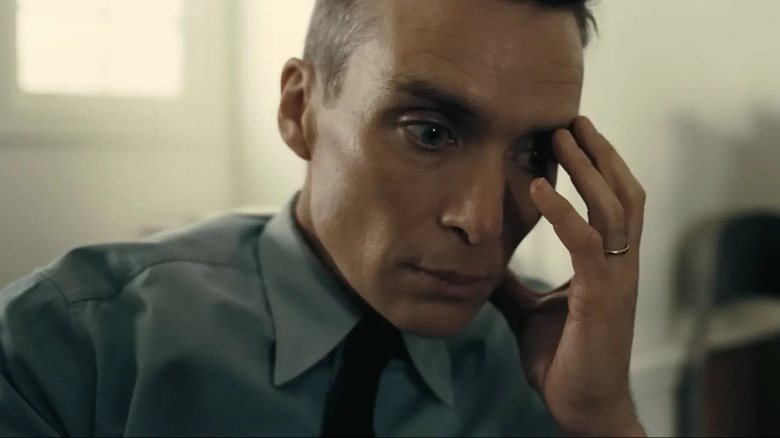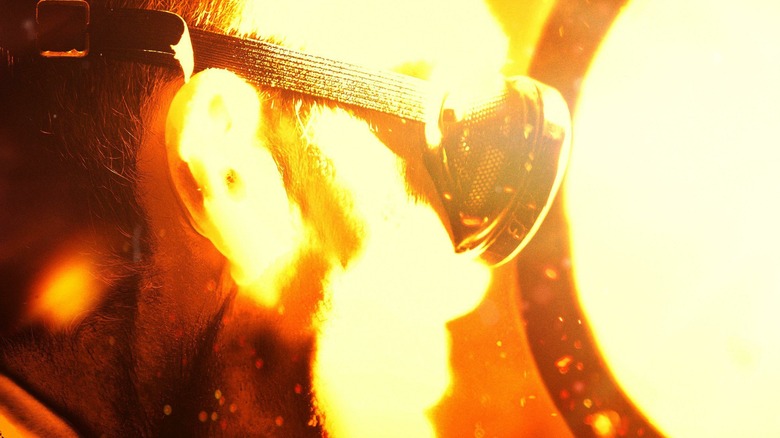How Christopher Nolan's Oppenheimer Recreated A Nuclear Explosion Without Using CGI
As has been previously written about in the pages of /Film, filmmaker Christopher Nolan has endeavored to make his new film "Oppenheimer" — a biopic of J. Robert Oppenheimer, one of the men behind the invention of the atomic bomb — with a minimum of computer-generated images. Nolan has always been very vocal about his fondness for analog filmmaking, preferring to shoot on physical film and rely as much as he can on practical effects. Nolan has used some CGI throughout his career, but will never be one of those directors who finds themselves filming inside greenscreen environs.
This sense of artistic purity, perhaps alarmingly, led Nolan to recreate nuclear explosions in real life for "Oppenheimer." The director, quite naturally, wasn't about to start exploding actual atomic bombs, but he did want to get real-life explosions on camera. This involved a lot of munitions experimentation, needing to find other, non-nuclear substances that would recreate the shape and look of a mushroom cloud. The explosions Nolan ultimately created weren't nearly as large as an atomic blast, but they were still dangerously large.
In the most recent issue of Total Film Magazine, the "Oppenheimer" special effects supervisor Scott R. Fisher — a longtime Nolan collaborator — talked about what was required to emulate the destruction of a bomb that size. He notably talked about the Trinity nuclear test of 1945, a test that was well-filmed and documented (one can visit the Trinity site in New Mexico to this day). Luckily for Fisher, the filming of "Oppenheimer" was less elaborate than some of Nolan's other fantasy films. But that didn't make accuracy any less important.
Big-atures
Fisher said:
"It was my sixth film with Chris. Compared to a lot of the other ones we've done, it was definitely not as rigorous with day-to-day filming. He said, 'There's not as much stuff for you on this as the other one, but there's a couple of things we do have to cover.' And that was, of course, the Trinity explosion, and some prop builds, and elements of different things that we had throughout the film."
Fisher, who also worked on films like "Nope" and "Top Gun: Maverick," noted that reading scripts for Nolan was a different experience than reading them for other filmmakers. He noted that effects sequences are largely assumed to be achieved in CGI and that he, as an effects man, immediately begins picturing the type of CGI that may be needed in any given sequence. No so for Nolan, who often surprised him with what he wanted done practically.
For "Oppenheimer," Fisher and Nolan thought of old-fashioned miniatures, but for explosions. Big enough to look real, but small enough to put a camera kind of close to. He said:
"It is like an old-school technique. We don't call them miniatures; we call them big-atures. We do them as big as we possibly can, but we do reduce the scale so it's manageable. It's getting it closer to camera, and doing it as big as you can in the environment."
It seems that the explosive recreations required a lot of the chemicals, flammables, and accelerants that one often hears are terribly dangerous to play around with. As a special effects technician, Fisher got to play around with explosives on a professional level. This kind of tinkering should be left to the experts.
The explosion itself
Fisher explained the ingredients to his bomb:
"It's mostly gasoline, propane, any of that kind of stuff, because you get so much bang for your buck. But then we also bring in stuff like aluminum powder and magnesium to really enhance the brightness, and give it a certain look ... We did a bit of that on this, because we really wanted everyone to talk about that flash, that brightness. So we tried to replicate that as much as we could."
Total Film also spoke with Andrew Jackson, another effects technician who had a lot of experience filming bombs and explosions. He recalled presenting some of his ideas to Nolan in an exciting "explosion demo reel." This was something of a golden opportunity for Jackson, who saw recreating nuclear blasts as a fun, unique challenge. He liked giving his presentation, and it seems that Nolan selected the look of what he wanted from Jackson's visual album. Jackson said:
"I've been doing this for years. I had years of little samples and things that I filmed. So I put together a single screen with little thumbnails of all these different effects and things that I filmed that I thought were interesting. And I just played that on a big screen and said, 'Is there anything here that you find interesting?'"
Jackson previously worked with Nolan on "Tenet" (which earned him an Oscar) and "Dunkirk" as well as films like "Mad Max: Fury Road," and "Knowing."
It appears that Nolan hired the best and more enthused in the business. One can be sure that those explosions will be, well, mind-blowing.


